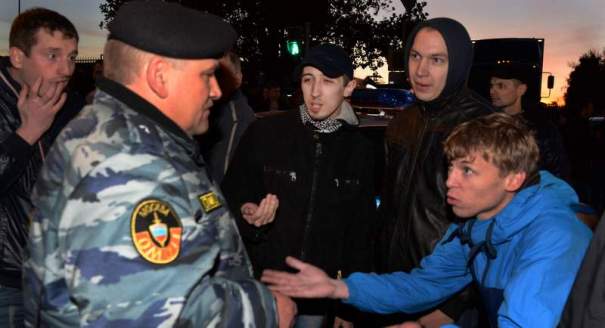Last weekend, two districts of Moscow became a battlefield between the police and the people described as nationalists by mass media or as hooligans by the authorities. The pretext was a murder of a Muscovite by a person of a South Caucasus origin. The Ministry of Internal Affairs launched an operation Vulcan to prevent proliferation of the riots and detain suspect organizers and activists of those events. Over 200 people were arrested. About a dozen police were injured.
Moscow has been a place of pogroms many times, including several incidences after the Soviet Union collapse. It seems that last weekend the authorities were more efficient than in previous cases, yet still not enough. The question is, how efficient they can be?
According to several studies of the mass violence phenomenon worldwide, the first wave of pogroms is often missed by the law enforcement agencies, despite their awareness of a high probability of pogroms. It can be explained in two ways. On the one hand, these agencies need some time to assess probability and possible scale of pogroms in order to deploy an appropriate number of troops.
On another hand, the agencies can actually let rioters initiate pogroms attempting to achieve two goals. One of them is the canalization of feelings of disobedience of people. The second goal may be to exert pressure on some communities which become the target of such pogroms.
Anyway, the perception of a pogrom as chaos does not reflect the reality. According to Natalie Zemon Davis, “Even in the extreme case of religious violence, crowds do not act in a mindless way”. This can be witnessed in many incidences. For instance, Ian Talbot in his study of The 1947 Violence in Punjab demonstrated the existence of an organized effort behind the mass violence and a certain structure to support it.
What we can do if the pogrom is not totally unavoidable? I absolutely agree with doctor Davis, who argues that if we want to secure trust and ensure safety in society and to guarantee that the violence it generates will take the least cruel of forms, then we must think more about changing the central values of the society to emphasize tolerance and the use of non-violent ways of conflict resolution.





